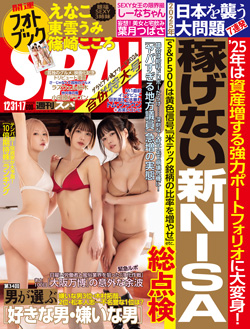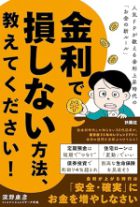『英語対訳で学ぶ日本』が役に立つ④――「伊勢神宮」を説明できるか
以上が、「JAPAN Forward」(ジャパンフォワード)に掲載された『英語対訳で学ぶ日本』の英文書評を、麗澤大学の犬飼孝夫先生に対訳していただいたものである。
さて、本連載の1回目で紹介したが、『週刊教育資料』(5月28日号、発行=教育公論社)の本書の書評記事を転載させていただく(左側画像)。
評者は愛知教育大学教授の高橋美由紀さんだ。高橋先生は総合商社で輸入業務に携わり、結婚を機に退職。その後、公立中学校の英語教師となり、さらにスキルアップを図るべく京都大学大学院で博士号を取得。兵庫教育大学大学院で助教授などを経て現職。特に、小学校での英語教育法の専門家だ。
本書の内容のエッセンスを実に的確にご紹介いただいている。
そこで本稿では、ご紹介いただいた本書の「伊勢神宮」の該当ページの対訳を以下に掲載したい。また、本連載の⑤回目では、同じく「和食」の該当ページを掲載する。
【日本文】022 伊勢神宮
伊勢神宮(いせじんぐう)は、全国約8 万の神社の最高位に存する。正式名称は単に「神宮」といい、内宮(ないくう)および外宮(げくう)の両正宮(しょうぐう)と、14 の別宮(べつぐう)、その他109 社、合計125 社を合わせてそう称する。祭神(さいじん)は、内宮が皇室の祖先神・天照大神(あまてらすおおみかみ)、外宮が衣食住の守り神・豊受大神(とようけおおかみ)である。
創建は、天照大神から授かった鏡を垂仁(すいにん)天皇の時代に、この地に祭ったことによると伝えられている。社殿は弥生(やよい)時代の様式に由来し、その保存には特別な工夫がなされてきた。それは7 世紀に始まった式年遷宮(しきねんせんぐう)というもので、20 年ごとに隣接地にまったく同じ社殿を建て直すことである。1300 年の間に62 回を数えている。
このような伝統は世界に類例がなく、伊勢神宮は日本文化の独自性を象徴する。一方、A・J・トインビーには「あらゆる宗教の根底的な統一性を感得する」と、その普遍性が指摘されている。
【英訳文】022 Ise Jingu (Shrine)
Ise Jingu is positioned at the head of about eighty thousand shrines throughout Japan. Its official name is simply, “Jingu” (“the shrine”), which refers to both the inner and outer main shrines, 14 detached① shrines, and 109 other shrines, a total of 125 shrines in all. Enshrined② in the inner shrine is the goddess Amaterasu Omikami, divine③ ancestor of the imperial household, while the protectress④ Toyouke O kami, goddess of clothing, food, and dwellings⑤, is enshrined in the outer shrine.
It is said that Ise Jingu was founded during the reign⑥ of Emperor Suinin, when the mirror received from Amaterasu was enshrined there. The shrine buildings are derived from the Yayoi-Period style, and a special method has been put in place to preserve them. Under this method, called shikinen sengu, which began in the seventh century, a completely identical⑦ building is rebuilt on neighboring land once every twenty years. This has been carried out sixty-two times in 1,300 years.
There is no tradition like this in all of the world. Ise Jingu is a symbol of the uniqueness⑧ of Japanese culture. However, Arnold J. Toynbee pointed out the universality⑨ of Ise Jingu when he remarked of it, “I feel [there] the underlying⑩ unity of all religions.”
【英単語解説】
① detached (ディタチト:分離した) ② enshrined (enshrine インシュラインの過去分詞:祭る)③ divine (ディヴァイン:神の)④protectress (プロテクトレス:守り女神)⑤ dwellings (dwellingドウェリングの複数形:住居)⑥ reign( ゥレイン:治世)⑦ identical( アイデンティクル:同一の)⑧ uniqueness (ユーニークネス:独自性)⑨universality (ユーニヴァーサリティ:普遍性)⑩ underlying (underlieアンダライの~ ing 形:基礎となる)
(⑤に続く)(文責=育鵬社編集部M)
 |
『英語対訳で学ぶ日本 ――歴史と文化の111項目』 あなたは英語で、日本を伝え説明できますか? 英語の勉強にもなり、日本史通にもなれる。草の根の交流に役立つ珠玉の一冊! 
|
ハッシュタグ
ハッシュタグ
おすすめ記事





















